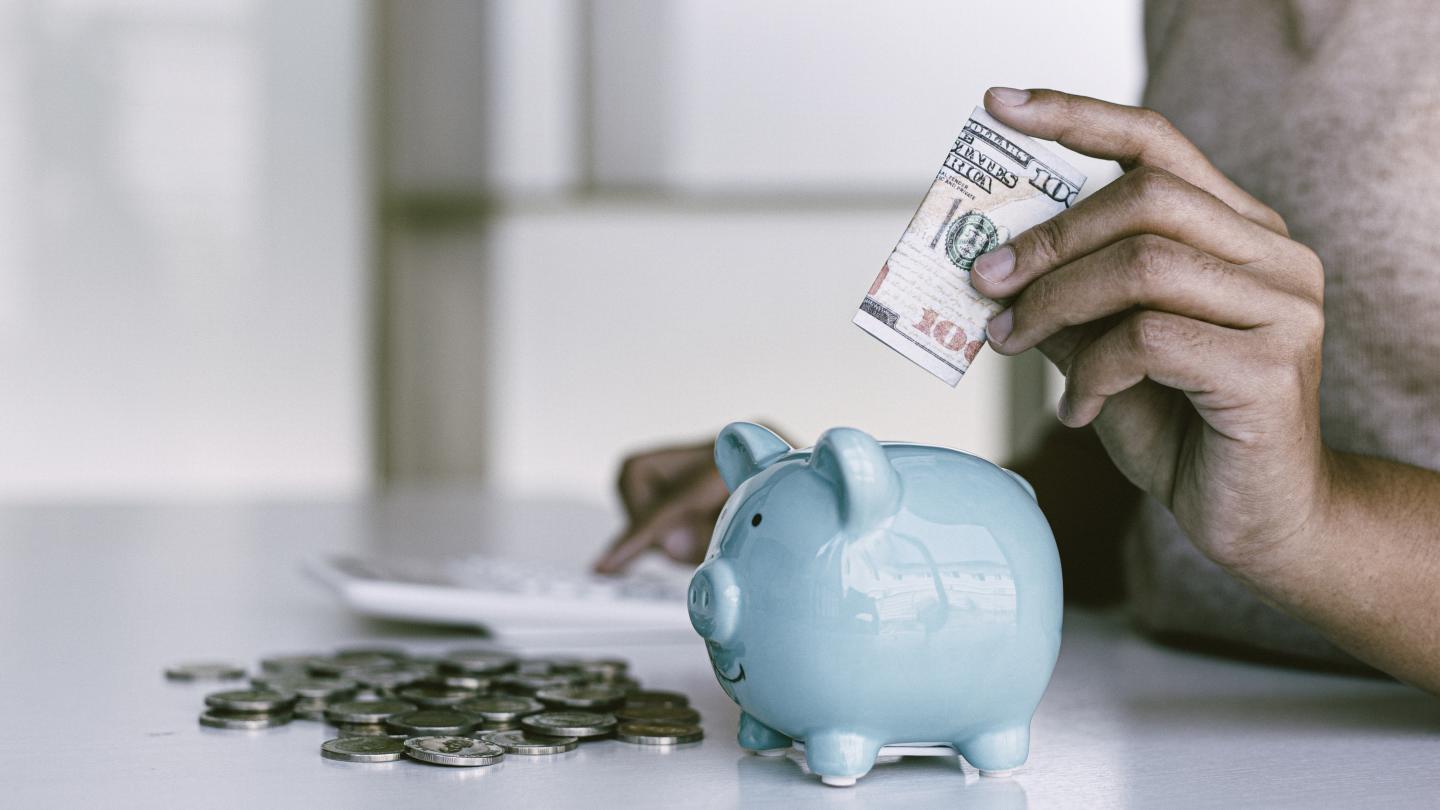How to find influencers for small businesses and creators
Influencer marketing is a powerful tool for small businesses and solo creators. Here’s how to find influencers to promote your brand and products.
TL;DR
Using influencer marketing and outreach in your business
Whether you’re a small business owner or an independent creator, influencer marketing can be a powerful tool to build brand awareness, grow your audience, and drive sales.
Here’s how to find influencers that are right for you:
- Identify the type of influencer you’re looking for
- Use hashtag research on social media platforms like Instagram and TikTok
- Search for niche keywords on Google to find bloggers
- Leverage your existing creator network
- Head to YouTube to find video creators in your industry
- Seek out influencers on professional networks like LinkedIn
- Use influencer marketing tools to browse profiles and organize your campaigns
- Make a great first impression with a solid outreach email
If you’ve ever seen a social media personality talking about a nifty new product, you’ve likely experienced the world of influencer marketing.
I’d like to think I’m pretty good at tuning out traditional ads, but I’ve happily bought quirky snacks, birthday gifts, and more blogging software than anyone could ever need thanks to sponsored endorsements from my favorite creators.
That’s influencer marketing at work, and it can be super lucrative for big companies and small creators alike. But finding the right influencers to promote your products can be tricky.
In this guide, we’ll take a closer look at how to find influencers, particularly as a small business or digital product creator . Let’s dive in.
How to find influencers: 9 ways
Influencer marketing is a promotional strategy where brands collaborate with individuals who have a large and engaged audience.
Influencers are often considered experts in their niche. They have earned the trust of their followers, so their vote of confidence can present a huge opportunity.
90% of marketers view influencer marketing as effective, and on average, the return on investment (ROI) is $5.20 per $1 spent .

It’s no wonder the influencer marketing industry is expected to be worth 13.8 billion by the end of 2021 .
If you’re ready to claim your piece of the pie, here are nine surefire ways to find the perfect influencers every time.
#1 Get clear on who you’re looking for
Before you begin your search, you’ll need to determine what type of influencer is right for your digital marketing campaigns.
Influencers are normal people like you and me. Some are serious, some are funny, some are stylish, some are sporty, and no two are exactly alike. The person you work with should have a similar energy, outlook, and tone to your brand.
Most importantly, they should also have an established following that includes members of your target audience.
Influencers are typically tiered based on how many followers they have .
Nano influencer: 10,000 followers or less
Micro influencer: 10,000–100,000 followers
Macro influencer: 100,000–1 million followers
Mega influencer: +1 million followers

There are pros and cons to each level:
Smaller influencers typically have ultra-niche audiences and higher engagement on their posts. (Engagement refers to likes, comments, shares, etc.) They have less reach, but the people who do see their work are more likely to be interested in the content they create.
Larger influencers are great for brand awareness campaigns. They have more reach, but often have lower engagement rates. Also, since their audience is broader, you could end up paying more for fewer targeted views.
Believe it or not, micro-influencers are thought to be the most effective for small businesses. They have a decent number of followers, but not so many that their accounts feel impersonal.
They also tend to have a close connection with their audience and a higher engagement rate than macro and mega influencers.
The key takeaway is that large follower counts aren’t the most important thing when finding influencers for your products. To make your influencer campaigns effective, you want to get your work in front of the right people, first and foremost.
Here are a few other things to consider when choosing an influencer:
Does their target audience match your target audience?
What social media platforms do they use?
What kind of engagement do they get on their posts?
Do they have experience doing paid social media work in the past?
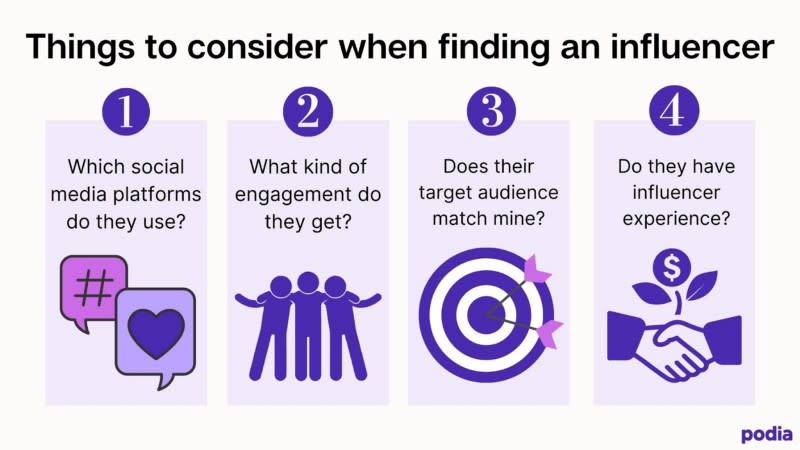
With your ideal brand influencer in mind, it’s time to go out and find them.
#2 How to find influencers on Instagram
Instagram and influencers have always gone hand in hand. In 2020, there were 6.12 million posts sponsored by brands on Instagram . In 2021, 68% of brands considered Instagram to be the most important platform for their influencer campaigns.
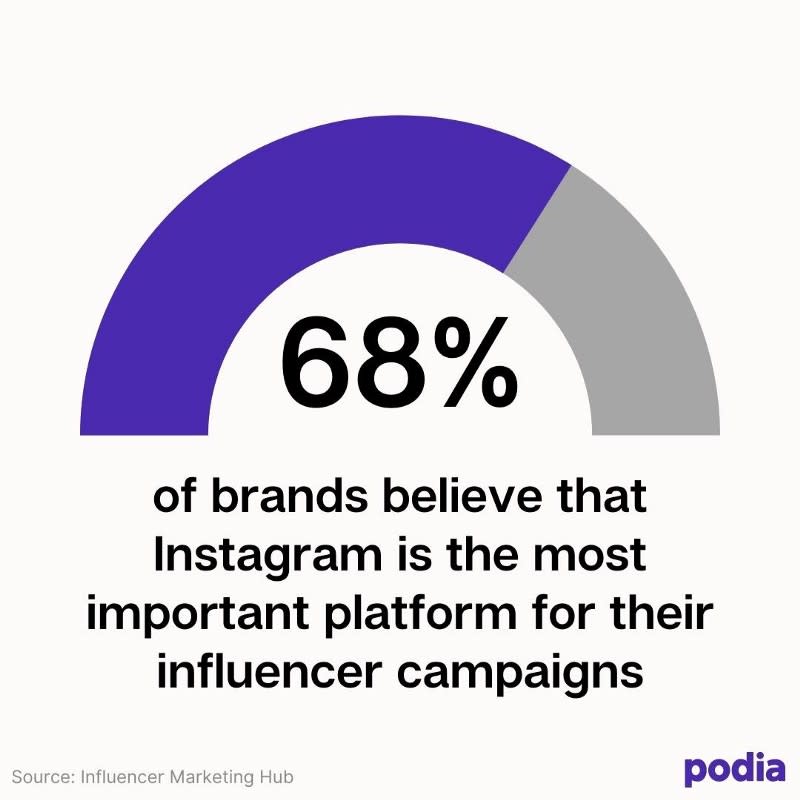
To get in on the action, start by doing hashtag research for your niche.
For example, if you sell an online course about how to improve your handwriting, you could search for tags like #handwriting, #bulletjournal, or #studywithme.

Next, browse through the accounts that perform well for your niche hashtags. When you find an influencer you’re interested in, check how often they post and what kind of engagement they get.
You can also look through your own followers and the followers of your competitors to find Instagram influencers. If you notice anyone with an active audience that’s relevant to your niche, it could be worth reaching out to them.
Pro tip: Keep an eye out for accounts that already do some product promotions. This can be a good indicator that they’re open to sponsored content agreements, and it ensures that they have some experience.
You can tell if a post is sponsored because it will say “ad”, “partner”, or “sponsored” in the caption, or it will say “paid promotion” in the heading of the ad.
To see an example of sponsored content, check out this reel by travel creator Jeff Jenkins from Chubby Diaries . In his post, he does an excellent job showcasing Princess Cruises, and he uses the tag #PrincessPartner to disclose his sponsorship.
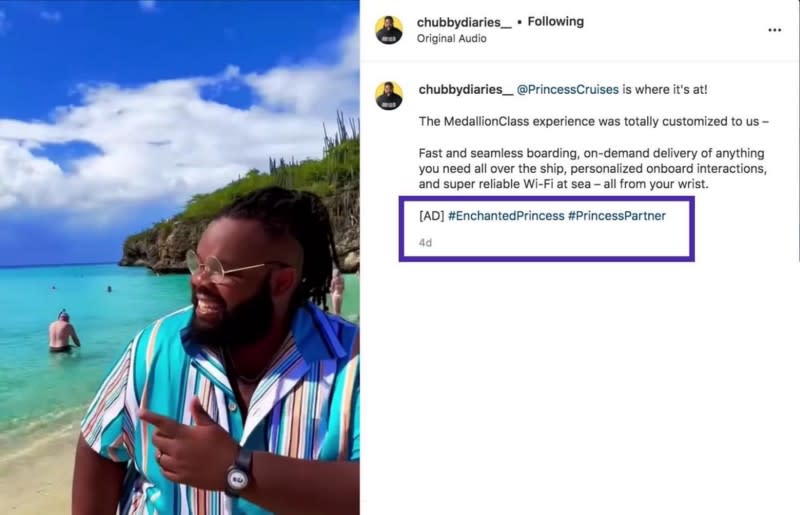
As you research, try a variety of hashtags related to your niche to discover new influencers.
Remember not to get too caught up in the numbers. In most cases, a smaller account that reaches your ideal audience is more valuable than a larger, more general account.
#3 Finding influencers on TikTok
While TikTok is a newcomer on the influencer stage, one study found that 45% of respondents had used TikTok for an influencer campaign in 2021.
Like Instagram, TikTok has a search bar where you can look for topics related to your niche. Spend some time searching for your target keywords to find creators who already talk about your product topics.
Let’s circle back to our handwriting course example. I went to TikTok and searched for “handwriting”. Several accounts about how to have better handwriting showed up in the results. These accounts were created by relevant influencers who could potentially promote my course.
This TikTok influencer already does promotional posts for other brands, so they might be a good person to reach out to about sponsored projects.
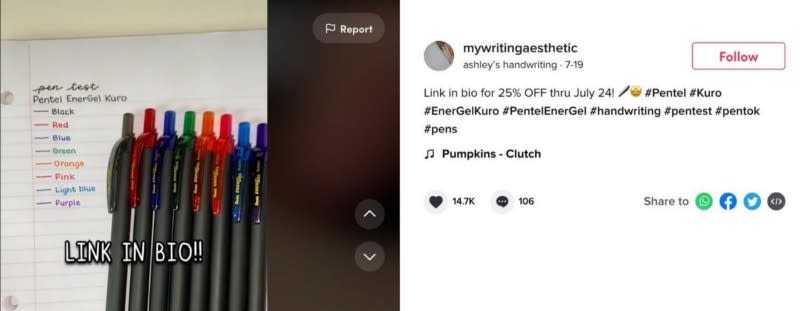
Given the viral nature of TikTok, it can also be a good platform to run product giveaways and build brand awareness fast.
#4 Google search using keywords
Bloggers can also be a great resource for promoting your products and services.
While social media posts are excellent for fast exposure, blog posts have a longer shelf life thanks to SEO (search engine optimization). This means that reviews and articles about your product can be found in search results long into the future.
To find blogging influencers, head to Google and search for niche keywords along with phrases like “best”, “review”, or “roundup”.
When you find a blog post relevant to your brand, you can reach out to the owner and ask them to consider mentioning your work.
When I searched for “best handwriting courses”, for example, I found this article containing resources for better penmanship. The author mentions several tools, apps, and videos to help people improve their handwriting.

This article could be a natural fit for my handwriting course, so it’s worth reaching out to the blog owner.
Your pitch can be something simple, like asking them to include a mention of your product in an existing post, but you can also negotiate dedicated sponsored posts, affiliate agreements , or guest blog posts that benefit both parties.
By the way, if you’re interested in starting an affiliate program for your products, Podia makes it easy. Take our built-in affiliate marketing tools for a spin with our 14-day free trial.
#5 Leverage your current network
No creator is an island, and you might already have some top influencers in your existing social network.
Are you a member of any helpful Facebook groups or communities with people in your niche? Have you met Instagram friends who serve a similar audience? Do you have an email list of people who are interested in your work?
These people can be a great place to start with influencer marketing.

From personal experience, exploring my existing network was the main way I found influencers when I wanted to promote my own online products .
I started by brainstorming similar-niche bloggers that I’d collaborated with in the past. I thought about people I’d met in communities online, as well as connections I’d made on Instagram. From there, I wrote guest posts and arranged affiliate partnerships as my marketing strategy.
I liked this method since it felt like a win for everyone: my connections got more blog content and an affiliate link to earn commissions, and I got more time with my target audience.
Plus, working with familiar faces was really fun. Solopreneur life can feel lonely at times, and partnering with other talented people I’d met in the industry was truly a joyful experience.
Newsletter
Join our newsletter
Join thousands of creators receiving our weekly articles about launching, growing, and thriving as a creative entrepreneur.
#6 Keyword research on YouTube
Like with Google, you can use YouTube to find creators who are already established in your niche. 36% of brands use YouTube for influencer marketing, so this can be a great place to find new customers, especially if your product is more visual.

To start, head to YouTube and search for relevant keywords along with the word “review”. This will help you find influencers who already have experience with the types of products you offer.
For example, if you sell Instagram presets, you could search “Instagram presets review” to find influencers who have reviewed this type of product in the past.
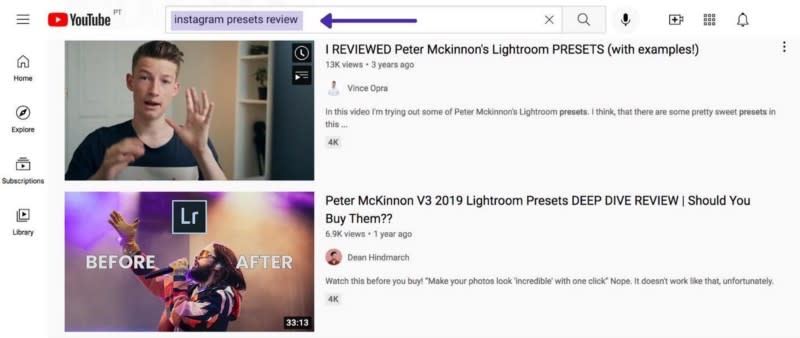
You can also type questions that your ideal audience might also be looking for.
For example, if you sell a course about growing a following on Pinterest , try searching “what’s the best Pinterest course?” to find creators already talking about the subject.
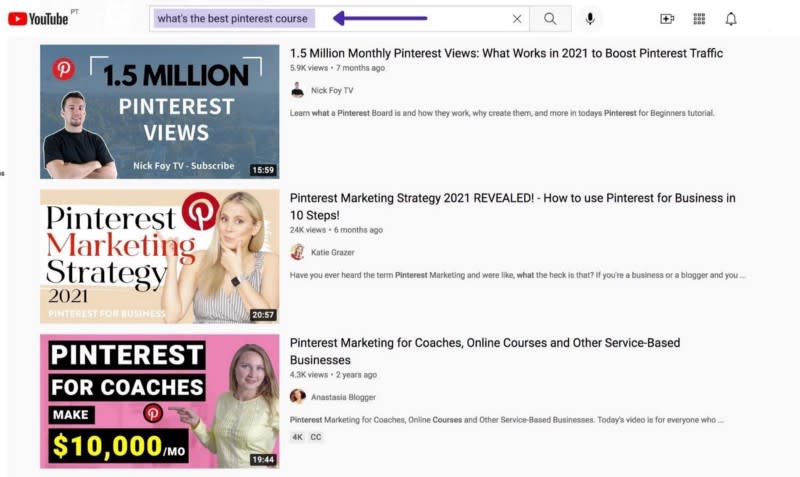
Once you know which YouTubers are already influential in your industry, reach out to these creators to pitch your influencer marketing campaign ideas.
#7 Finding influencers on LinkedIn
You can also use LinkedIn to find influencers to work with. Just a heads up, influencers might not refer to themselves as influencers on LinkedIn. Try searching for phrases like content creator, YouTuber, or blogger for better results.
LinkedIn is especially useful if you want to filter influencers by location. If you sell a local product or service, you can discover people in particular areas that might fit the bill.
When you find a potential influencer on LinkedIn, the next step is to dive more into their work. Look at their blog, YouTube channel, and social channels to decide if they’re the best fit.
#8 Influencer marketing tools
You can also use premium influencer marketing platforms to connect with creators of all sizes. These platforms offer an all-in-one solution where you can find influencers, plan campaigns, and issue payments.
Here are a few popular options to get you started:
Upfluence: This is a comprehensive influencer marketing platform where you can connect with creators, send pitches, leave reviews, and track results.
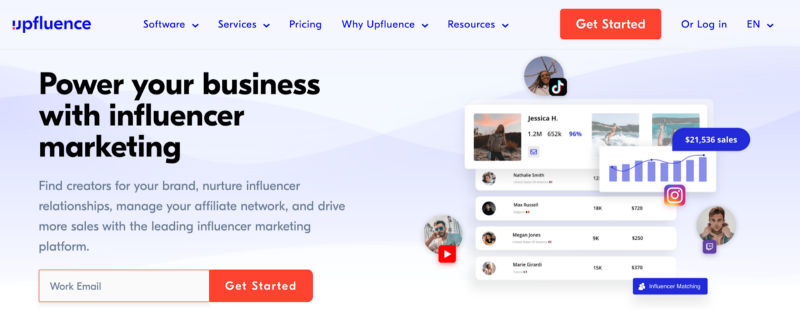
Influence co: Here, you can see analytics and audience demographics for social media influencers. You can also create campaigns that influencers can apply for and track your results all in one place.

Post for Rent: This platform has search features so you can generate a list of influencers you’re interested in and analyze their profiles. There is advanced filtering available and fraud detection to protect all parties.
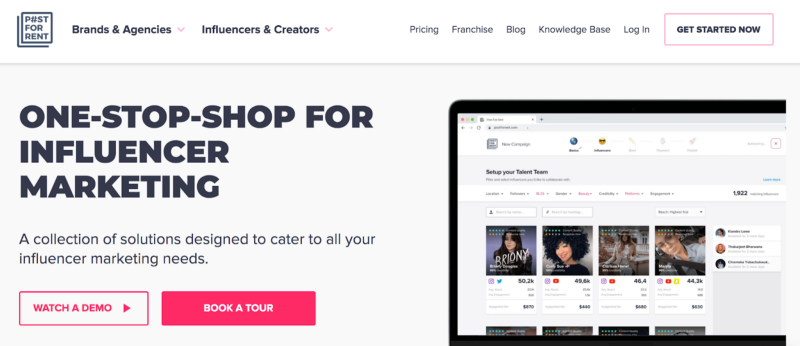
IZEA: Use this tool to search for influencers, learn more about them, and manage social media marketing campaigns all in one dashboard.
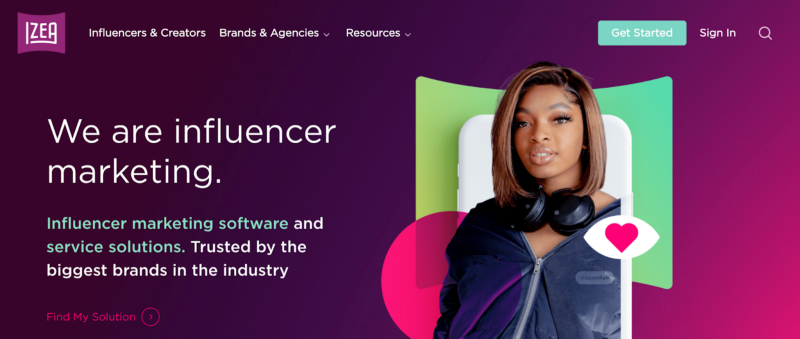
BuzzSumo: This platform shows you what’s trending on social media. You can also use it as a research tool to find influencers on Twitter and Facebook based on keywords and retweets.
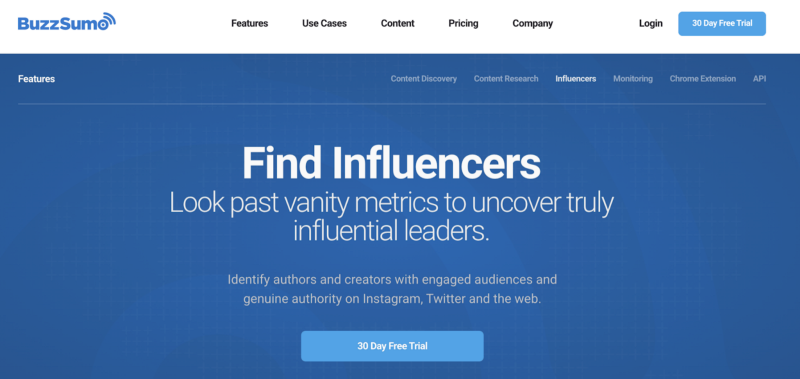
No matter where you find your influencers, the last step is perhaps the most important one.
#9 Seal the deal with a great first impression
Big influencer accounts get swamped with spammy DMs every day, so it’s essential to make your pitch stand out.
When contacting influencers, send a personalized and professional message to their email address. Include specific information about why you selected them and what you hope to get out of the campaign. The more details you can provide upfront, the better.
Here are some things to include in your influencer outreach email:
Address the influencer personally and include references to their work. Let them know why you think they are the best influencer for your brand. This shows that you’ve done your homework and aren’t just sending out bulk emails to the masses.
Share information about your products and business. This can help them determine if your products are a good fit for their audience.
Explain what types of campaigns you’re interested in. Mention if you are offering a free product, an affiliate arrangement, or other perks.
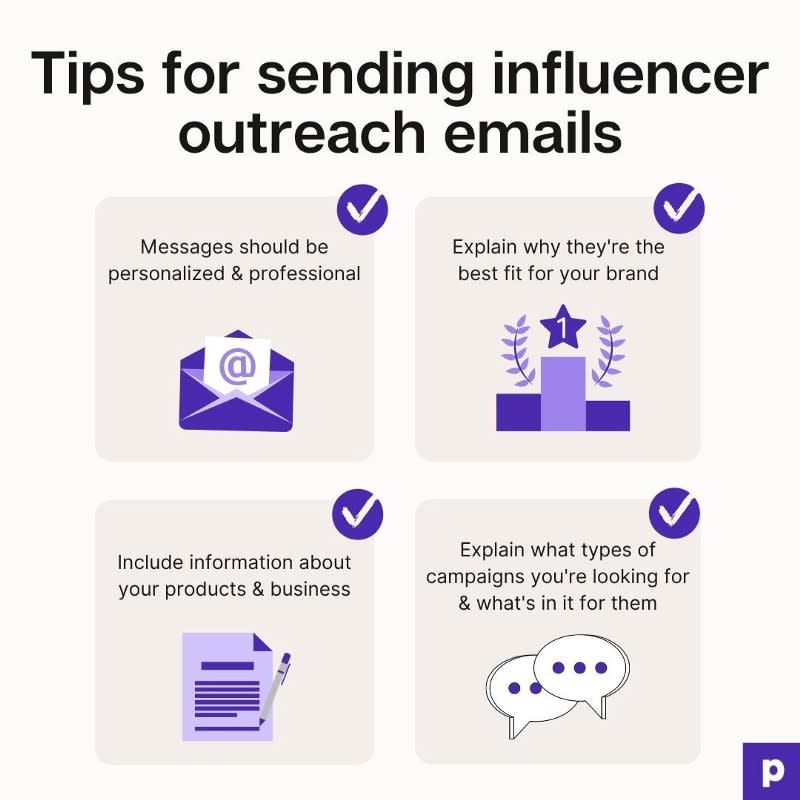
Once you’ve reached an agreement, it’s always a good idea to make a contract to keep everyone on the same page. In the contract, you can state what the deliverables are and other details like the timeline, pricing, and payment terms.
Finally, influencers must always disclose their partnership with you when posting sponsored content. Deals of a promotional nature are usually indicated by #sponsored, #gifted, #partner, or #ad.
(The specific rules vary by platform. Here are the disclosure guidelines for Instagram and YouTube , for example.) You can see an example below .

This requirement ensures transparency and builds trust with viewers. At its core, this trust is the very reason why influencer marketing works.
Bottom line:
Your work deserves to be noticed. By finding the right influencers for your campaigns and promotions, you make it easier for your dream clients to find you. That’s a true win-win for everyone. Good luck!

